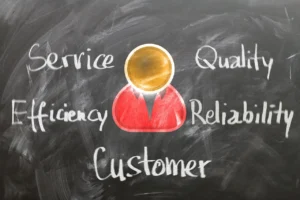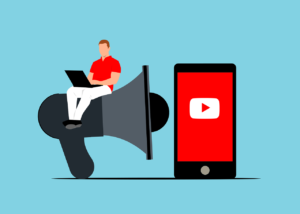
Converting followers into loyal customers is where the real magic happens. Social media marketing is no longer about simply amassing followers. While having a large audience is important, it’s only the first step in building a thriving business. If you’re wondering how to make that leap, this guide will walk you through the strategies to achieve just that.
Why Conversion Matters
Having thousands of followers liking and sharing your posts is great, but without conversions, your efforts fall flat. Turning followers into loyal customers is the bridge between awareness and sustained business growth.
How to Converting Followers into Loyal Customers: Proven Strategies for Sustainable Growth
Building a robust social media following is an incredible achievement for any business, but the real challenge lies in converting followers into loyal customers who will continue to engage with and purchase from your brand. While gaining followers is an essential first step, translating that engagement into long-term success depends on your ability to turn these followers into paying, repeat customers. This article explores proven strategies for converting followers into loyal customers by fostering deeper connections, providing real value, and ensuring long-term customer retention.
1. Invest in Research: Understand Your Audience to Foster Loyalty
The foundation of converting followers into loyal customers starts with understanding your audience on a deeper level. When you truly grasp their needs, desires, and pain points, you can tailor your approach to resonate with them on an emotional level.
- Needs and Preferences: To effectively convert followers into loyal customers, begin by identifying the challenges your audience faces and how your products or services can help solve those problems.
- Occupations and Interests: Knowing your audience’s personal and professional interests allows you to create personalized content that speaks directly to their needs.
- Pain Points: By understanding your audience’s frustrations, you can position your products as the perfect solution to their problems, making it easier to convert followers into loyal customers who trust your brand.
Investing in audience research through tools like surveys, polls, and social media analytics will help you fine-tune your approach, making your brand more relatable and ultimately increasing conversion rates.
2. Analyze Your Content: Refine Your Strategy for Maximum Engagement
To effectively convert followers into loyal customers, it’s essential to continuously analyze your content and understand which types of posts perform best. Not all content will resonate equally with your audience, and not every platform will yield the same results.
- Identify High-Performing Platforms: Use platform-specific tools like Facebook Insights, Instagram Analytics, and Twitter Analytics to understand where your followers are most engaged. This allows you to focus your efforts on platforms that drive the highest engagement and conversions.
- Discover the Best Types of Content: Whether it’s blog posts, videos, infographics, or behind-the-scenes content, analyze the types of content that your audience responds to best. The more relevant and engaging your content is, the higher the likelihood of converting followers into loyal customers.
- Time Your Posts Strategically: Post at times when your audience is most active to ensure maximum visibility and interaction. This could mean posting at peak hours or experimenting with different time slots to see what works best.
By analyzing your content, you can optimize your social media strategy, ensuring that your efforts are focused on the types of content that drive conversions and long-term customer loyalty.
3. Tempt Your Followers: Subtle Persuasion for Increased Conversions
Rather than pushing hard sales tactics, use subtle persuasion to guide your followers toward becoming loyal customers. By presenting your products or services in a way that feels organic and non-aggressive, you can build trust and increase conversions.
- Tell Relatable Stories: Share real-life success stories and testimonials from happy customers. This humanizes your brand and builds an emotional connection, making it easier to convert followers into loyal customers.
- Run Contests and Giveaways: Offer incentives like discounts, vouchers, or free products in exchange for participation. This not only boosts engagement but also creates a sense of urgency, prompting followers to act quickly and make a purchase.
- Create Urgency: Use limited-time offers or exclusive deals to create urgency, encouraging followers to act before the offer expires. The fear of missing out (FOMO) can be a powerful tool in converting followers into loyal customers.
By utilizing these subtle persuasion techniques, you can inspire action without overwhelming your followers with overt sales pitches.
4. Develop a Personalized Approach: Build Deeper Connections
One of the most effective ways to convert followers into loyal customers is by making your followers feel seen and appreciated. Personalization is key to building strong, lasting relationships with your audience.
- Send Personal Messages: Acknowledge followers’ milestones like birthdays or anniversaries with special discounts or greetings. This small gesture makes your audience feel valued and builds emotional loyalty.
- Tailored Recommendations: Use past interactions and data to suggest products or services that align with each follower’s individual interests. Personalized recommendations increase the likelihood of conversions by showing that you understand their unique needs.
- Low-Commitment CTAs: Encourage followers to take small actions, like signing up for a newsletter or joining an email list. These low-commitment calls-to-action (CTAs) nurture deeper engagement and can lead to future sales.
By focusing on personalization, you foster trust and increase the likelihood of converting followers into loyal customers who feel emotionally connected to your brand.
5. Embrace the Act of Giving: Deliver Value First
To build a loyal customer base, it’s essential to deliver value before expecting anything in return. Offering valuable content and experiences helps to establish your brand as a trusted resource, making it easier to convert followers into loyal customers.
- Educational Tips and Tutorials: Share how-to guides or industry insights that are relevant to your audience. By providing helpful content, you position your brand as an expert, increasing your credibility and trustworthiness.
- Interactive Campaigns: Engage followers through creative campaigns like “design our next product” contests or live Q&A sessions. This interactive approach fosters a deeper connection and encourages followers to feel involved in your brand’s journey.
When you give value upfront, followers are more likely to reciprocate with loyalty and purchases, making it easier to convert them into long-term customers.
6. Find a Balance Across Platforms: Focus on ROI
Not all social media platforms will yield the same return on investment (ROI). To optimize your strategy and increase conversions, focus your efforts on platforms that provide the best results.
- Monitor Traffic Sources: Use tools like Google Analytics to determine which platforms drive the most traffic to your website or landing pages. This data helps you identify where your social media efforts are paying off.
- Prioritize High-Performing Channels: Direct your focus, time, and budget toward the platforms that yield the best results in terms of engagement and conversions.
- Adapt Your Strategy: If some platforms are underperforming, reassess your strategy or reduce your efforts on those channels. This will allow you to concentrate on the platforms that deliver the highest ROI.
Balancing your social media efforts across platforms and focusing on high-performing channels ensures that your resources are maximized for converting followers into loyal customers.
7. Build Loyalty Through Consistency
Consistency is the cornerstone of building a loyal customer base. Followers are more likely to stay engaged and convert into customers if they see a reliable, consistent brand presence across all channels.
- Post High-Quality Content Regularly: Consistently share valuable and engaging content to keep your brand top-of-mind.
- Communicate Updates: Keep your followers informed about new products, services, or promotions. Regular updates help maintain engagement and build excitement around your brand.
- Engage Actively: Respond to comments and messages promptly. Show your audience that their opinions and feedback matter.
By maintaining a consistent presence and staying engaged with your followers, you can strengthen their loyalty and increase the chances of converting followers into loyal customers.
8. Leverage Testimonials: Build Social Proof for Trust
Positive customer testimonials and reviews are powerful tools for converting followers into loyal customers. Social proof reassures potential customers that your brand delivers value and can be trusted.
- Request Reviews: Encourage satisfied customers to leave reviews on social media or your website. Positive feedback boosts you

Converting Followers into Loyal Customers Tips for 2025 r credibility and demonstrates the quality of your product.
- Highlight Testimonials: Share reviews and testimonials across your social media channels, website, and email campaigns to increase visibility and trust.
- Showcase User-Generated Content: Repost content from happy customers, such as photos or videos using your product. This builds authenticity and encourages others to follow suit.
Social proof helps to establish credibility and makes it easier to convert followers into loyal customers who trust your brand.
9. Exceed Expectations: Go Above and Beyond for Customer Delight
Exceeding your customers’ expectations is one of the most effective ways to foster loyalty and convert followers into loyal customers. By providing exceptional experiences and going the extra mile, you create memorable interactions that drive repeat business.
- Offer Exceptional Support: Provide quick and helpful responses to customer inquiries or issues.
- Add Surprise Perks: Surprise your customers with unexpected discounts, thank-you notes, or free samples with their purchases.
- Reward Loyalty: Consider creating a loyalty program that offers discounts or exclusive perks for repeat customers.
Delighting your customers not only ensures they return but also helps in converting followers into loyal customers who are more likely to advocate for your brand.
Converting followers into loyal customers requires a thoughtful strategy, personalized engagement, and consistent value delivery. By understanding your audience, refining your content, using subtle persuasion techniques, and leveraging tools like testimonials, you can foster trust and build long-lasting relationships with your followers. Keep in mind that loyalty isn’t just about making a sale—it’s about creating a community of customers who believe in your brand and advocate for it. Implement these strategies, and watch as your followers evolve into a loyal customer base that drives your business forward.
FAQs
- Why is follower conversion important for business growth?
Follower conversion turns social media engagement into tangible sales and customer loyalty, directly impacting your revenue and brand reputation.
- How can I personalize my engagement with followers?
Use data driven insights to create tailored messages, offer personalized recommendations, and celebrate special milestones with your audience.
- What tools can help analyze social media performance?
Platforms like Facebook Insights, Instagram Analytics, and third party tools like Hootsuite or Sprout Social provide in depth performance metrics.
- How do contests and giveaways boost conversions?
They create excitement around your brand, encourage participation, and provide incentives that lead to sales and increased brand awareness.

Conclusion
Converting followers into loyal customers goes beyond simply growing your audience it’s about building genuine connections, delivering consistent value, and creating memorable experiences. By understanding your audience’s needs, engaging authentically, and offering solutions that resonate, you foster trust and reliability. Personalization, strong calls to action, and exclusive incentives encourage followers to take the leap from passive viewers to active customers. Loyalty is solidified when you continue nurturing these relationships through excellent service, meaningful interactions, and rewarding their support. Ultimately, converting followers into loyal customers requires aligning your brand’s mission with their needs, creating a foundation for lasting, mutually beneficial relationships.
By applying these strategies, you’ll not only grow your follower base but also build a community of loyal customers who champion your brand. Start converting today, and watch your business soar!



















